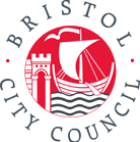Championing patient and public involvement on the Bristol Health Partners Executive Group
Martin Gregg, one of two public contributors on the Bristol Health Partners Executive Group, reflects on his time in this key leadership role, which he leaves this summer.
- 8th May 2018
Martin Gregg, one of two public contributors on the Bristol Health Partners Executive Group, reflects on his time in this key leadership role, which he leaves this summer.
When I was invited to write this blog post, I had a look at the other blogs on the Bristol Health Partners website and was really impressed at the number of references to patient and public involvement (PPI) and patient led programmes. I haven’t looked at them all, but there are clear references in the blogs about the STITCH, Psychosis, Parkinson’s and Other Movement Disorders and the Stroke Health Integration Teams (HITs). These are just the first examples that I came across and I hope I haven’t upset anybody by not mentioning their HIT. There really is a lot of very good work going on that involves patients and the public in very practical ways.
I don’t remember it being like this when I first became a member of the Bristol Health Partners Executive Group back in the autumn of 2014.
I’m a public contributor with People and Health West of England (PHWE) and currently co-chair its strategy group. I joined PHWE in 2014, when it was first set up, alongside seven other patients and service users. PHWE is a collaborative initiative that promotes innovative and effective public involvement in research and evidence-based service improvement, guided by its partners – the West of England Academic Health Science Network, the Clinical Research Network West of England, NIHR CLAHRC West, Bristol Health Partners, NIHR Bristol BRC, the University of the West of England, NIHR Research Design Service South West and local Healthwatch.
Part of my role with PHWE was to represent the partnership on the Bristol Health Partners Executive Group to champion PPI and to advise on best practice, alongside my colleague Angela Stagg, another PHWE public contributor. We were supported, initially, by David Evans from UWE who had been instrumental in the establishment and leadership of PHWE. David is professor in Health Services Research and demonstrated an inspiring commitment to public involvement in public health.
I didn’t know much about Bristol Health Partners when we joined the Executive Group and our first meetings might have been quite daunting without David’s support. The group is attended by senior representatives from the universities, health trusts, local government and the clinical commissioning group. However, as we got to know the members and learned more about Bristol Health Partners, our confidence grew and I do feel that we have been able to influence the partnership.
The role Angela and I have played on the Executive Group has always been to champion effective patient and public involvement, especially in the HITs but also in the other more strategic initiatives that Bristol Health Partners has launched, such as the Local Digital Health Research and Development Group. We have taken part in decisions on the allocation of funding and other resources to HITs.
We have also regularly attended HIT PPI review meetings where we look in detail at the level to which HITs are working with patients and the public in developing their programmes and the support they need to do this effectively. I have always seen our role both to challenge and to offer support and suggestions regarding best practice.
I think there are two examples where we can demonstrate that we have taken the initiative to champion PPI and protect its significance within the partnership. One relates to funding and the other to ensuring effective support to public contributors in the HIT programmes.
Bristol Health Partners achieves significant results on a very limited budget. I would say that it certainly punches above its weight, largely due to the very real enthusiasm and commitment of the talented members of the HITs and the influence of the partner representatives at Executive and Board level. However, Bristol Health Partners has recently experienced significant funding pressures and support for PPI appeared to be threatened. Angela and I were able to make a strong case that demonstrated the impact a lack of support for PPI would have on the HIT programme. We were given a fair hearing by the Executive and subsequently by the Board and an opportunity was identified to protect PPI support.
Public contributors can find themselves very isolated in research projects and this might not always be clear to professional members of the team. Examples might include a lack of clarity about roles and responsibilities, inconsistency with remuneration, insufficient background information about the project and lack of contact with other public contributors. Angela and I have always stressed the importance of effective, practical support for public contributors and initiated a survey to identify the support needs of public contributors.
Our roles as public contributors with PHWE and the Bristol Health Partners Executive have always been time limited and Angela and I are due to step down shortly. I have found it a very interesting and sometimes challenging opportunity. I think that the HIT model is a genuinely innovative approach that breaks new ground by bringing together clinical and research leaders to offer different perspectives to shared objectives. They are increasingly demonstrating that patients, carers and other members of the public are key partners in this endeavour.
During my time on the Executive I have definitely seen a growing commitment to PPI and a recognition of its importance. It’s now the right time for Angela and me to step down and allow new public contributors to take up the challenge.






